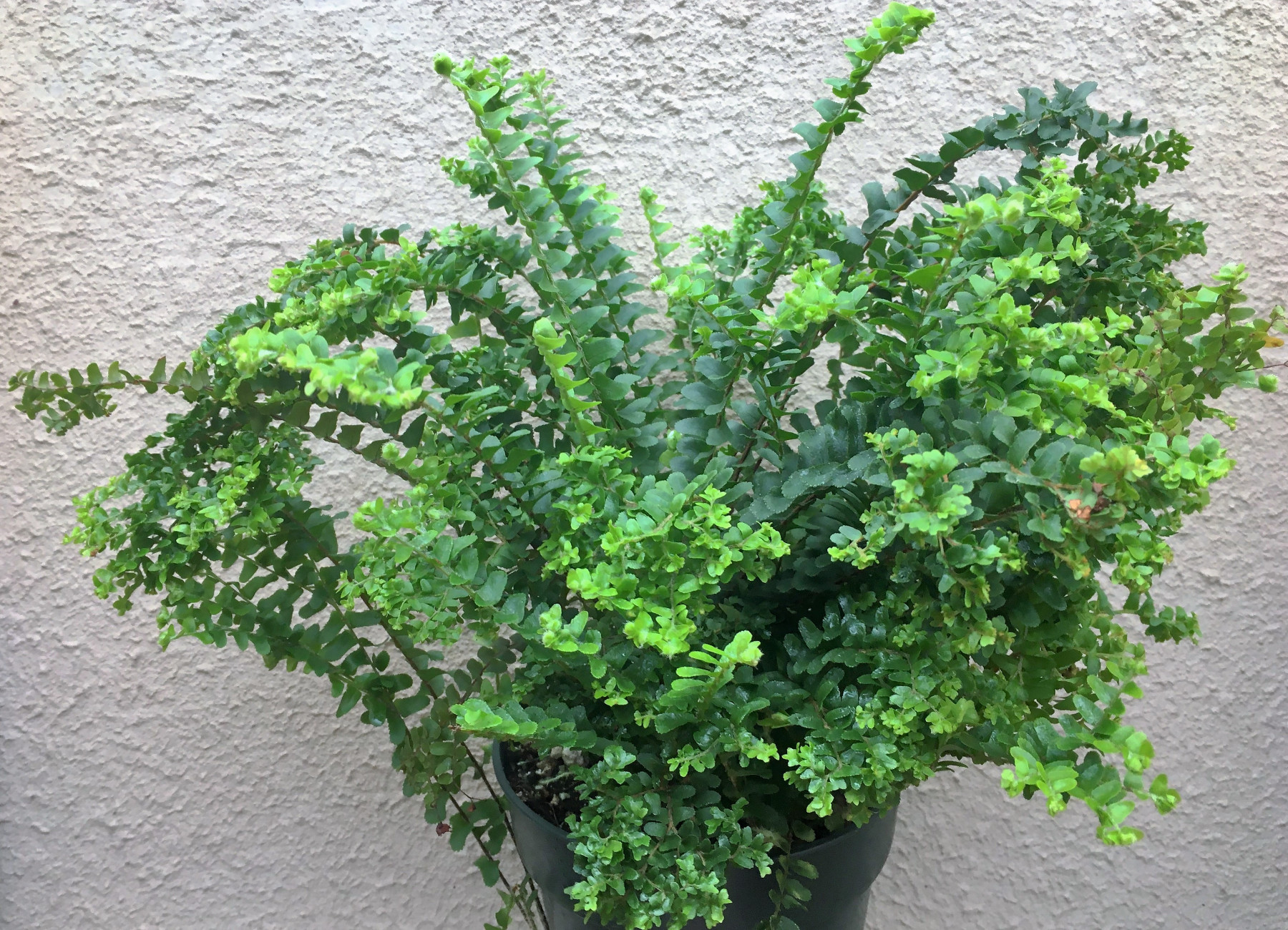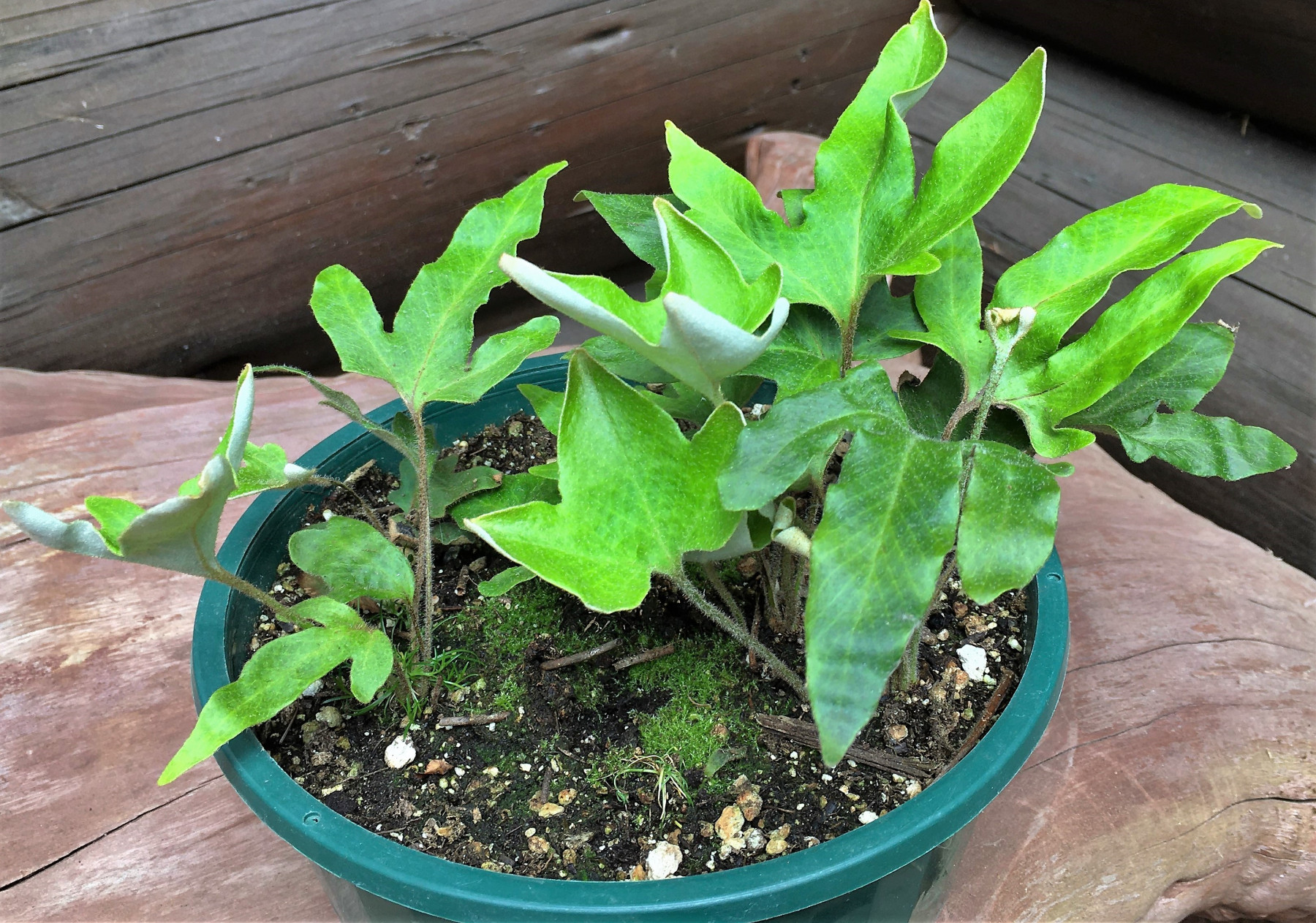
This month I have the pleasure of talking with my good friend, Judith Jones about ferns—her favorite subject. Judith is the owner of Fancy Fronds Nursery in Gold Bar Washington, and ferns have taken center stage in her life since 1975. When she was tapped as the fern expert for the Sunset Western Garden Book, she insisted that I get on board as the writer. So of course, she’s the one I turn to with all questions about ferns. Now I want to know—which are the five easiest ferns to enjoy in a greenhouse?
But first, how do ferns function in greenhouse designs? “It’s texture,” Judith says. “Among whatever other plants you have in there—orchids, palms, Abutilons—adding the lacey fronds of ferns brings the whole thing together.” So, just as florists include ferns in a bouquet for cohesion, growing them in your greenhouse unifies your whole plant collection.
Judith’s Tips for Fern Success
Soil: Grow indoor ferns in a good houseplant potting soil, “With compost and peat,” she says. “It should be light and airy,” To that end, she usually adds extra perlite. She also feeds with indoor liquid fertilizer, cutting the amount by half for ferns as a general rule.

Containers: Judith prefers straight-sided plastic pots for her ferns. She then slips the containers into decorative cache pots with no holes in the bottom. The cache pots give stylish design continuity to your collection. However, certain rhizomatic ferns prefer wide shallow dishes or baskets rather than tall pots.
Water: Those showy containers also make it easier to water. Judith says. “Don’t drown them, but many ferns prefer taking water up from the bottom.” And water temperature is important, especially for tropical ferns that thrive in a warm greenhouse. Judith always keeps a charming carafe full of water by her plants. It stays at room temperature—just the way the ferns like it.

Transplanting: When a fern becomes root-bound, she only pots it up one size, “About an inch bigger in diameter. But no more than two sizes up,” Judith cautions. “It depends on how fast they grow.”
Air: “You need air circulation for healthy plants,” Judith notes. She uses a fan down below the benches and another up high, as well as the greenhouse louvres. In summer, she gradually acclimates her ferns to the outdoors—mostly in dappled shade.
Judith’s Selections
Adiantum raddianum – This maidenhair fern is considered evergreen, “But,” Judith says, “it does like to rest in late winter. So don’t think it’s dead.” Reduce water, trim old fronds back, and start watering more when new fronds arise.
Davallia trichomanoides – An 18-inch-tall evergreen spreader, Judith likes this squirrel’s foot fern for wide hanging baskets or bowls. “Their creeping rhizomes go right over the edges,” Judith says. “And they don’t mind drying out between waterings.”
Nephrolepis cordifolia ‘Pom Pom’ – This is a delightful form of Boston fern, Judith says, “It has water tubers on the roots, making it really good at handling neglect. It prefers a wide shallow basket so the rhizomes will fill the whole thing,” says Judith.
Polypodium formosanum –This evergreen 18-inch colonizing fern enjoys evenly moist soil and humidity. “As a creeping fern, like the Davallia, it also prefers a wide shallow container,” Judith says.
Pyrossia lingua – Aka tongue fern, “All the Pyrossia are evergreen, and incredibly tough,” Judith notes. While this one can live outside to Zone 7, it makes a good indoor plant, growing to 18 inches, with upright fronds and creeping stolons.


